Bushy Plants
![]()
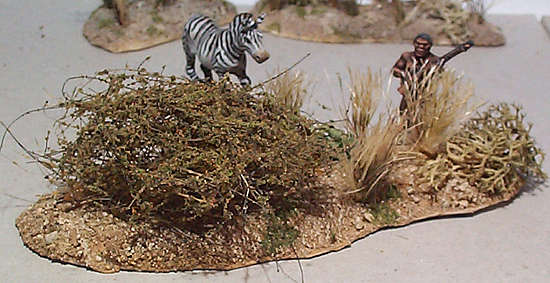 |
|
This page contains three different methods of making bushes - Lichen,
Flocked Horsehair and Moss.
It works best to intermingle them for a realistic variety of foliage.
|
Materials
|
|
|
Lichen
|
|
Using more than one colour, as in this example makes the terrain more interesting. Lichen comes in many colours, some of them rather lurid. The cheapest source I have found was the craft section of a DIY shop. For this sort of terrain the unbleached type is most useful because the greens are a bit vivid. You can try bleaching them by leaving on a sunny windowsill for a few months, if you have the patience, but never try to wash it off. The colour will come off, but the lichen will become hard and brittle which more or less ruins it. |
Rubberised Horsehair
|
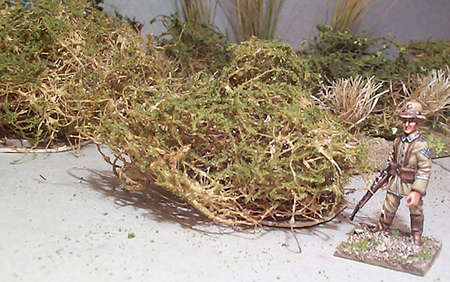 |
|
Rubberised Horsehair
This is a difficult substance to find, but ideal for foliage. There are to types, the curly variety on the right, and the spiky variety which has been used in the bush next to the zebra at the top of the page. It comes as an inch thick sheet. Tear chunks off, or cut them with a good pair of scissors. Then tease the clumps out slightly to give it a wilder look, which also makes it possible to create clumps two or three inches in diameter. Rubberised horsehair is a yellowy brown colour which is useable untouched, but this effect can be improved by dabbing lots of watered down dark brown emulsion paint to the tops and sides of the horsehair, before sprinkling them with flock.
When sticking horsehair down to a base, it can be difficult to get a strong bond. Don't spread the PVA thinly, but put it on in large blobs. Then put the bush on top and hold it in place with a clothes peg, clamped right in the middle. This will push the bush way out of shape, but don't fret, it will spring back when released. Doing this will push the bush down really hard on the glue and get a good contact area. |
Moss
|
|
The moss can simply be stuck in position with PVA. It is only suitable for small bushes and ground cover, but it is free! When the moss is first stuck down, it will be the colour that it is in this picture, but over a year or so it will fade to a yellowy brown, which is quite acceptable in this dry and dusty terrain. If you are going to dye it, then wait for it to fade first or it will be very difficult to predict what colour it will fade to. |
![]()
©2002. All rights reserved.
![]()

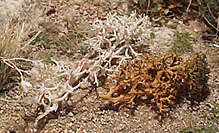 Lichen
(also called reindeer lichen - I think they eat it) is very easy to
use, just stick it down with PVA after the base has been textured and
painted. Lichen is suitable for smallish bushes (no larger about an
inch high) and is fairly expensive compared to other materials.
Lichen
(also called reindeer lichen - I think they eat it) is very easy to
use, just stick it down with PVA after the base has been textured and
painted. Lichen is suitable for smallish bushes (no larger about an
inch high) and is fairly expensive compared to other materials.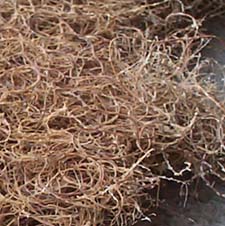
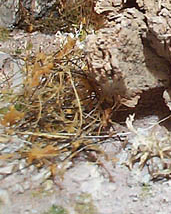
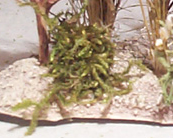 The
cheapest source of bushes is moss gathered from the garden. I tend to
take it off tree trunks and stones rather than moss growing on the ground,
which can be a bit earthy and entangled with grass.
The
cheapest source of bushes is moss gathered from the garden. I tend to
take it off tree trunks and stones rather than moss growing on the ground,
which can be a bit earthy and entangled with grass.